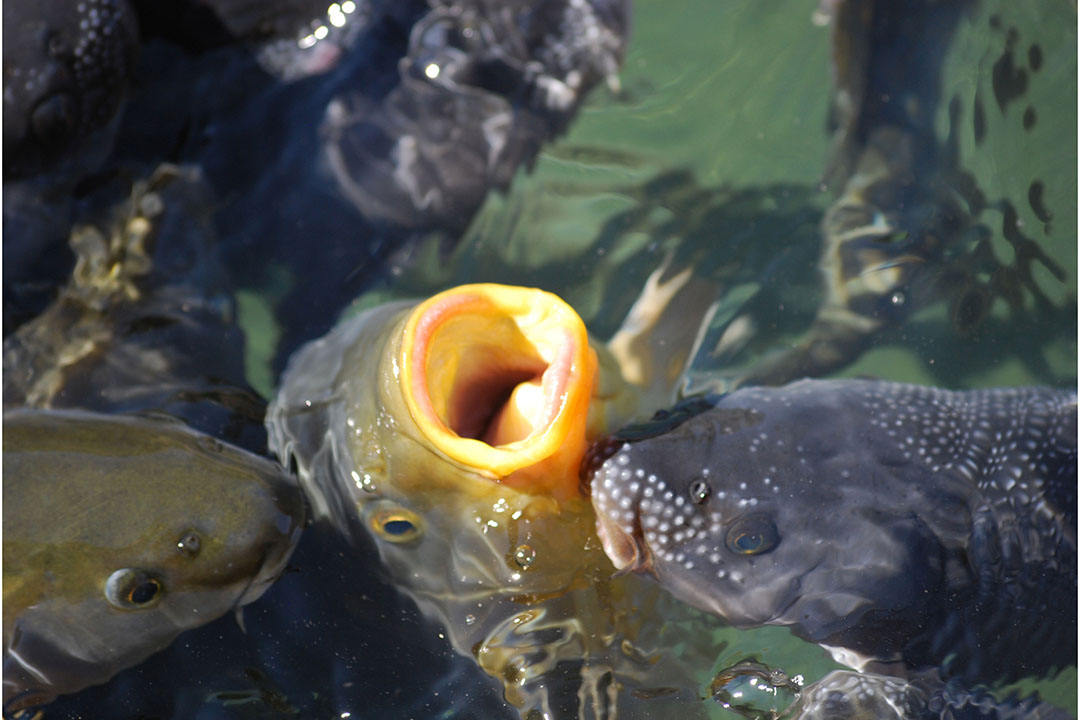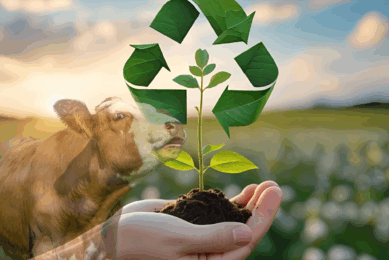Fermentation of aquafeed improves the sustainability of aquaculture

Fermentation is a cost-effective and environmentally friendly processing technique that could be very beneficial to aquaculture production. How can the aquafeed fermentation process improve aquaculture sustainability? This article takes a closer look.
A growing global population has increased the demand for fish and fish products. Aquaculture production mainly relies on fishmeal as a primary source of protein and lipid in aquafeed. However, the increasing price of fishmeal, the gap between demand and the availability of fishmeal, and environmental issues have led to extensive investigation to find proper alternatives to fishmeal.
What makes a fishmeal alternatives favourable?
Appropriate alternatives need to be high in protein with a favourable amino acid profile and soluble non-starch polysaccharides. They also need to be low in starch, fibre, and anti-nutritional factors with high digestibility and palatability. However, most plant-derived ingredients do not meet all these requirements. Some of these shortcomings can be addressed using fermentation, a cost-effective and environmentally friendly processing technique.
Fundamentals of fermentation
Fermentation introduces beneficial micro-organisms such as yeasts, filamentous fungi, and bacteria to a substrate and produces enzymes to start anaerobic energy production from carbohydrates. Various types of fermentation include ethanol fermentation, lactic acid fermentation, butyric acid fermentation, propionic acid fermentation and mixed acid fermentation.
Solid state fermentation generates dry substances in the absence of free-flowing liquid using yeasts or bacteria. Most plant-based aquafeed ingredients are processed through a solid state fermentation system. Submerged fermentation is applied to free-flowing liquid substrates such as molasses, wet distillers’ grains and broths to produce fermented liquid feeds. Gas fermentation produces single cell proteins, which can be included in aquaculture feed as a source of protein.
Micro-organism selection is a critical aspect in increasing yields of fermented products and lactic acid bacteria are powerhouses or workhorse microbes in fermentation. Substrates determine the micro-organisms’ growth and provide both physical and nutritive support to the growing culture. In addition, warm, moist, protein-rich environments that are pH neutral or slightly acidic are essential for a micro-organism to grow efficiently and carry out its role in the fermentation process.
How does fermentation affect feed ingredient composition?
Fermentation improves the nutritional profile and functional properties of raw materials by breaking down more complex compounds and releasing digestible nutrients in the process. Furthermore, fermentation reduces the anti-nutrients levels, resulting in a higher bioavailability of minerals, protein and simple carbohydrates.
Solid state fermentation of soybean meal enhances the crude protein and essential amino acids including arginine, threonine, histidine, lysine, leucine, isoleucine, threonine, methionine, phenylalanine and valine in the final product. Furthermore, soybean meal fermentation increases crude lipid content and wheat meal fermentation increases the quantity of proteolytic bacteria, reduces pH, and enhances the protein level.
- Cereal fermentation enhances the concentration of free amino acids as well as low molecular weight peptides and their derivatives.
- Rapeseed cake fermentation reduces saturated fatty acids and unsaturated fatty acids and increases polyunsaturated fatty acids content.
- In contrast, fermented fish silage has lower levels of polyunsaturated fatty acids.
- Fermentation of soybean meal and grass peas reduces crude fibre content. In addition, fermentation increases the bioavailability of micro-elements including magnesium, iron, calcium and zinc content in plant-sourced ingredients by lowering the amount of phytic acid and loosening the food matrix and increasing the accessibility of minerals.
Impact on anti-nutritional factors of aquafeed
Many plant-derived protein sources used in aquafeed contain a variety of anti-nutritional factors such as saponins, tannins, phytic acid, gossypol, lectins, and protease and amylase inhibitors. Fermentation produces phytase activity and an ideal pH, thus reducing phytate and enhancing the digestibility of amino acids, calcium, phosphorous and liberating soluble iron, zinc and calcium.
Fermentation of cereals, grass pea seeds and black gram seed meal lowers the content of phytic acid and tannins. Fermentation reduces the amount of protease inhibitors, phytic acids and tannins in millet grain and tannin, polyphenol, phytate and trypsin inhibitor activity in maize. Fermentation of soybean meal reduces levels of trypsin and phytic acid inhibitors and fermentation of jatropha kernel cake reduces lectin, phytate, saponins and trypsin inhibitor concentrations.

Impact on growth performance
Feeding fermented ingredients improves growth performance due to improvements in amino acids composition and protein content, and reductions in anti-nutritional factors, crude fibre, cellulose and non-starch polysaccharides. Furthermore, fermentation produces microbial metabolites such as enzymes, amino acids, bacteriocins, organic acids, pigments, polyphenols and vitamins which improve gut health and digestive activity.
Fermented soybean meal could replace dietary fishmeal protein of juvenile black sea bream by up to 20% without any negative impacts on growth performance. However, fermented soybean meal can replace up to 40% of dietary fishmeal protein in juvenile black sea bream without altering growth performance when supplemented with taurine, lysine and methionine.
Impact on nutrient digestibility
Feeding fermented plant ingredients increases nutrient digestibility. Dietary supplementation of fermented maize distiller’s dried grains increases protein, lipid, starch and energy digestibility in European sea bass. However, excessive dietary inclusion levels of fermented plant ingredients reduce nutrients digestibility. For example, including 30% or more fermented soybean meal reduces the apparent digestibility coefficient of dry matter, lipid and protein in black sea bream.
Impact on gut health and immune function
The fermentation process increases the bioavailability of vital antioxidant compounds such as isoflavones and flavone in raw soybean meal thus enhancing antioxidant activities in fish. Feeding fermented feed ingredients boosts circulating antibodies and improves immune system function. In addition, feeding fermented by-product meals improve gut morphology by increasing fold and villus height.
Fermented diets increase the population of probiotic bacteria colonising mucus membranes, thus preventing pathogens from sticking to the gut epithelium. Moreover, these probiotic bacteria stimulate cytokine release from gut epithelial cells, thus improving the activity of immune functional cells. The microorganisms used for fermentation can modulate the gut microbes of fish, increase the relative abundance of beneficial bacteria and reduce the relative abundance of pathogenic bacteria.
Concluding remarks
Fermented aquafeed ingredients play an essential role in improving sustainability of aquaculture production by nutritional enrichment of ingredients and improving growth performance, nutrient digestibility, immune function, gut health, metabolic and digestive enzyme activity in fish. However, due to variations in ingredients, and the type and nature of micro-organisms used for fermentation, assuring the nutritive values of fermented feedstuffs is challenging. So further research is required to address this issue.











